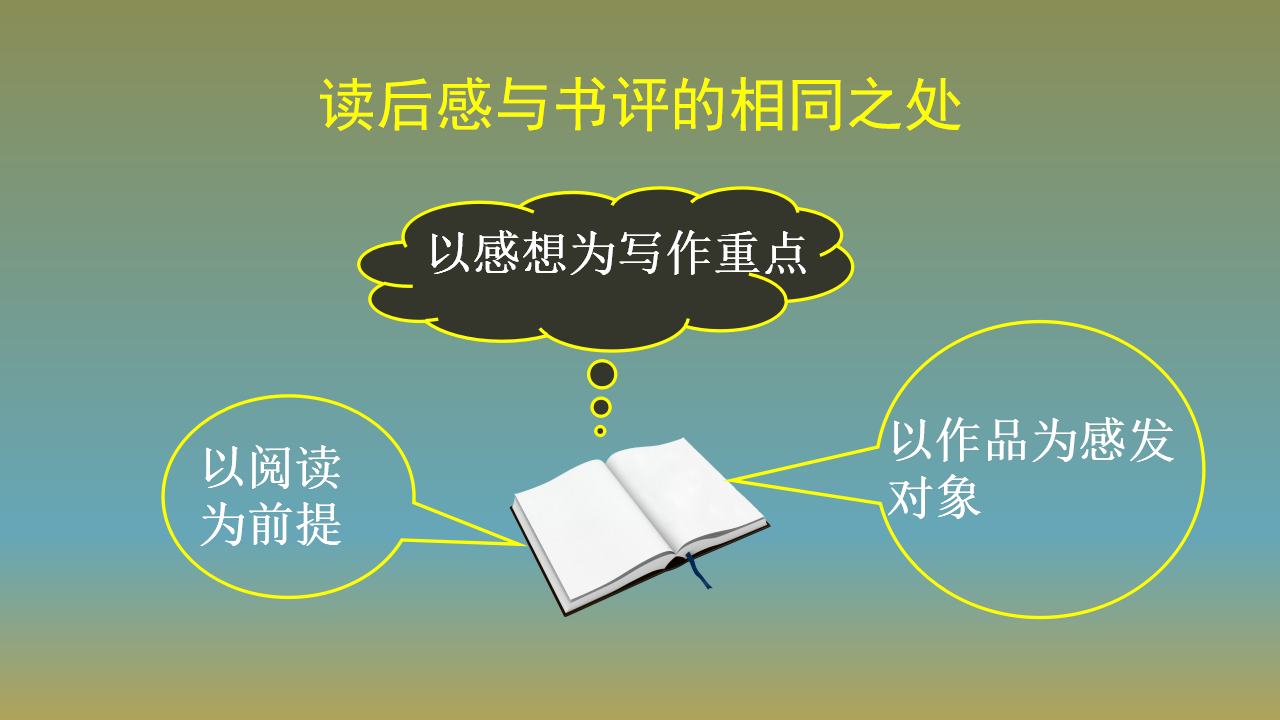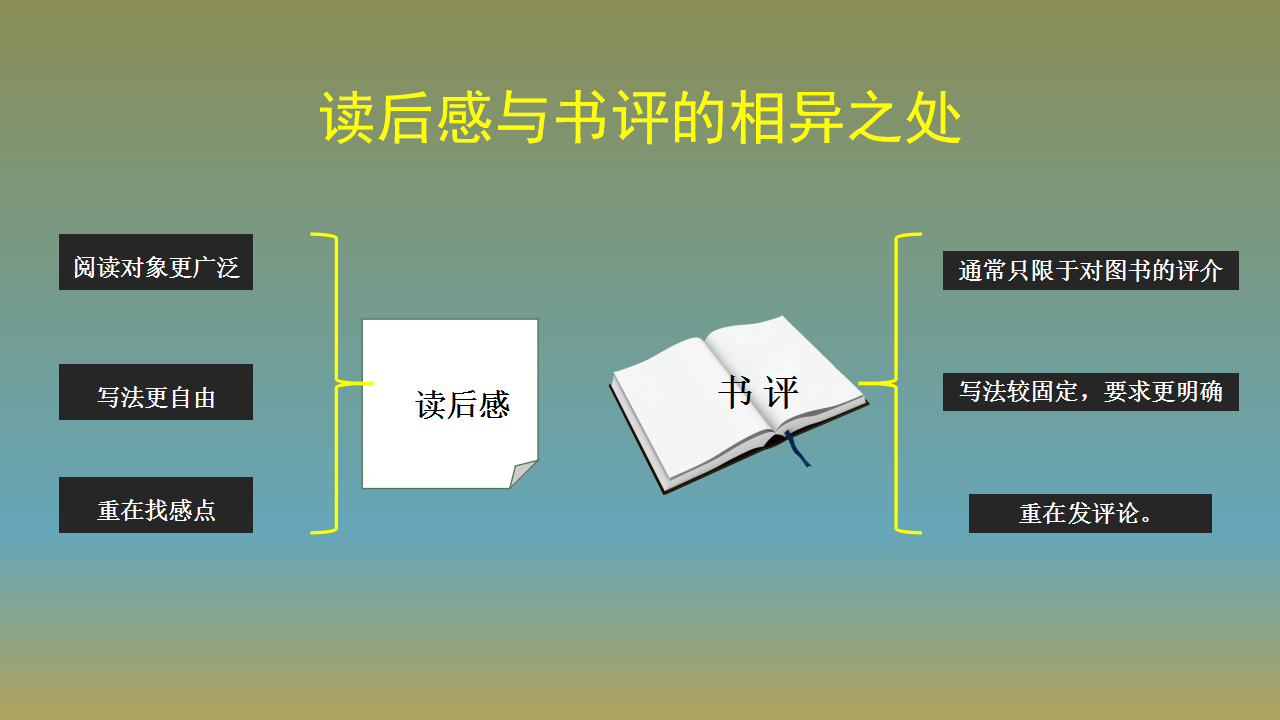Xiao Zhang: It’s great to be able to write a book review! You can force yourself to actively read and write an essay, which is very rewarding!
Wang: Yes. I also want to write a book review recently. I’m a little envious when I see people’s book reviews on Douban!
Xiao Zhang: It shouldn’t be hard to write a book review. Isn’t it the same as what we read before?
Xiao Wang: Really? I don’t think it’s that simple. If a book review is an after reading, why are there two other ways to call it, and they are indeed very different?
Xiao Zhang: So tell me, how do you differentiate?
Wang: Actually, I’m not sure.
Are you learning to write a book review and are you experiencing the same confusion?
When the age of lifelong learning meets the growing popularity of mobile Internet, are we in a state of “always online, always disturbed, always thinking shallowly. We are in a state of “always online, always distracted, always shallow thinking. When confronted with book reviews and post-readings, shallow thinking makes us think “they’re pretty much the same.
We don’t even give ourselves a chance to think about something that is so commonplace or so familiar that we rush to the next “ignore it”.
What are the similarities and differences between a book review and a reading?
The question has arrived, gladly.
1. Similarities

Read and feel after reading the book. What about book reviews? Read the book and comment on it.
A. both presuppose reading as writing.
So what is reading? I personally think that these reading methods produced in the background of the new era should belong to the method of using books, that is, how to use information based on reading the original text.
Reading returns to its original position, that is, what is reading itself?
Western representatives of accepted aesthetics, such as Isser, see reading as a living interaction between the text (work) and the reader. It is hierarchical: the first level is the reading of language, the second level is the appreciation of beauty, and the third level is literary criticism.
To give a simple example, for example, the words.
Misty waves, clinging willows, fragrant grasses in an isolated village, apricot blossoms flying in the slanting sun. Spring in the south of the Yangtze River, the apple is full of Tingzhou people have not returned.
–Spring in the South of the Yangtze River (Kou Jun)
Recognize the text, know the general meaning, spring has left the person who has not returned, longing for the end. This is language reading.
If you can picture in your mind a spring day with green willows, apricot blossoms, and people wanting to see the beauty of the poem, then you are appreciating the beauty of the poem.
Finally, if you can comment on the imagery, the realm, and the creative gains and losses of the words, you will be on the level of literary criticism.
It is like peeling a chestnut: the outermost layer is the thorny shell, which is easy to break if you do it right; the second layer is the hard shell, which looks smooth but is hard to peel; and the third layer is the membrane, which looks the weakest but is hard to peel clean.
Whether reading a single article or a book, the reader needs to have a dialogue with the text (work). To read a great work is to have a dialogue with a great man. In dialogue, the reader understands the thoughts, emotions, knowledge, ideas, values, and discovers the goodness, beauty, and beauty of the work, which leads to various feelings, experiences, ideas, opinions, and comments.
The result is the after reading and book review.
B. Both take the text (the work) as the object of emotion.
When a work is not yet in the reader’s reading process, it is not a work in the true sense of the word. From this point of view, readers’ reading weights should be taken into account when writing post-reading impressions and book reviews in new media platforms. More readers, more influence, to a certain extent, prove the success of writing.
Post-readings and book reviews cannot be made up in a vacuum.
There is a big difference between this and fiction writing.
Imagination, fiction, and fantasy do not seem to work in the writing of post-reading and book reviews. Lack of appreciation of the emotions and artistic beauty of the work, and lack of appreciation of the knowledge, ideas, value points and structure of the work, writing a successful book review becomes water without a source.
Give an example of each.
Read the fable “The Farmer and the Serpent” and write “Is the Serpent Really a Vengeance? –The snake was frightened, and it killed the snake with its sharp teeth. After careful reading, I have some feelings about it.
Li Yingxin, known as one of the three pillars of the Da Kung Pao literary arts book review, has an article on “Mr. Lao She’s Evaluation” in his book “The Interest of Book Critics”. From today’s point of view, Li’s assessment may be on the bland side, but his study of the work is serious and solid.
C. Both focus on thoughts as the focus of writing.
Without thoughts, the post-reading impressions would have no master mind.
If I only repeat the original text without seeing the author’s thoughts, especially those related to social reality, I will feel that I have read a fake post-reading. Therefore, the key is “feeling”!
What about book reviews? In the broadest sense, the review of a book is the finishing touch.
Even an “introductory” review, which focuses on the original text of the book, requires the author to be selective and engaging with his or her own introduction.
How can it be attractive? Demonstrate your own unique perspective in your presentation.
2. Differences

A. Writing an after-read is more widely read, more freely written, and more focused on finding a feeling.
As long as it is a written work, from a long novel to a fable or a poem, you can write a feeling after reading it.
The sense of feeling after reading can be deep or shallow, emotional or rational, all depending on the author’s reading process of the feelings and reason involved.
In terms of writing skills, the post-read feeling focuses on finding the feeling point.
A text can generate many points of feeling. However, the author usually can only discuss one central point, not all of them.
It is important to screen and compare them to find the one that you feel most deeply, that has the latest perspective, that has the strongest relevance to reality, and that you are comfortable writing about.
If you read The Old Man and the Sea (by Ernest Hemingway), you may have a variety of feelings, such as the old man’s fighting spirit moves you, or the old man’s successive blows at sea touches you, or the old man dragging the fish skeleton back to shore makes you think.
B. Book reviews are usually limited to reviews of books; they are written in a fixed style and require more specificity; they focus on sending out reviews.
Although they can be divided into introductory reviews, critical reviews and comprehensive reviews. The comprehensive review, currently popularly known as the “book list”, is a series of books together to review.
No matter what kind of book review, as the name implies, it is a book-centered, book introduction, review and research article, which can convey information about cultural publishing and academic research to readers. Of course, the average reader is not necessarily expected to write a book review at the level of research.
The key to a book review is to be more professional, or to comment on the intellectual content, ideas, or artistic features of the book, and to capture some of the “finger-pointing and gossiping”.
Book reviews have a long history. Liu Xiang of the Western Han Dynasty had written a narrative in the process of correcting and arranging books, one for each book, and the narrative into a summary of the “other records”, for books for the summary of the content, including the germ of book reviews.
Book review is like a mirror, reflecting the book reviewer’s insight, level of thinking and appreciation.
How to write a good book review?
1. Choose the right book according to your own interests and expertise.
Do not blindly follow the trend. Big coffee about review of a certain book, not necessarily you can also be handy, review to the head.
After all, the book review is to see the power of our review. So, fundamentally, write a book review to first improve their various aspects of cultivation, especially the level of theoretical thinking.
2. Read through the combination of careful reading to find out the value and characteristics of the book.
The first time you read a selected book, you can browse through the whole book, and the second time you have to read it carefully.
In particular, it is very important to grasp the key chapters and read them carefully.
How to identify important chapters is a matter of the reviewer’s depth of expertise and discriminating ability; the key is to identify the book’s characteristics and value.
It is like picking the biggest and most beautiful pearl from a pile of pearls.
For example, before I wrote the article “Story Thinking, How Your Writing Moves People”, I read through the book “Story Thinking”, and I found that “stories create power”, “story thinking is on a par with dialectical thinking and rational thinking”, and I was deeply impressed.
This is the best part of the book for me. If you grasp this point, you can interpret it into a text.
Recent Comments